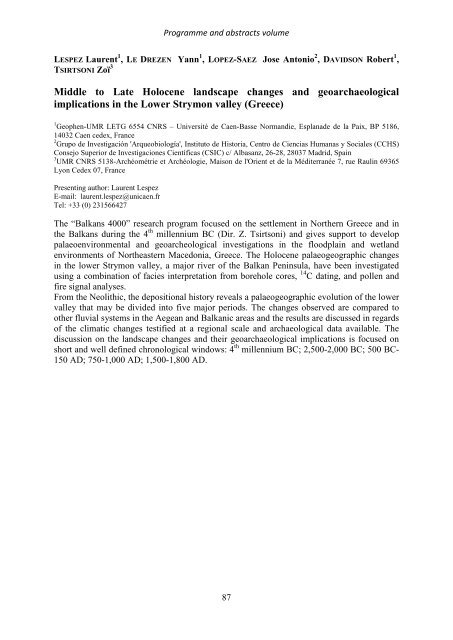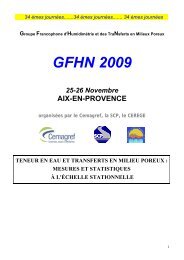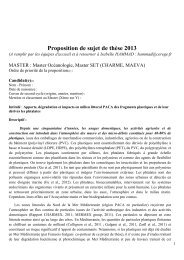LANDSCAPE ARCHAEOlOGY. EGYPT AND THE ... - CFEETK - CNRS
LANDSCAPE ARCHAEOlOGY. EGYPT AND THE ... - CFEETK - CNRS
LANDSCAPE ARCHAEOlOGY. EGYPT AND THE ... - CFEETK - CNRS
You also want an ePaper? Increase the reach of your titles
YUMPU automatically turns print PDFs into web optimized ePapers that Google loves.
Programme and abstracts volume<br />
LESPEZ Laurent 1 , LE DREZEN Yann 1 , LOPEZ-SAEZ Jose Antonio 2 , DAVIDSON Robert 1 ,<br />
TSIRTSONI Zoï 3<br />
Middle to Late Holocene landscape changes and geoarchaeological<br />
implications in the Lower Strymon valley (Greece)<br />
1 Geophen-UMR LETG 6554 <strong>CNRS</strong> – Université de Caen-Basse Normandie, Esplanade de la Paix, BP 5186,<br />
14032 Caen cedex, France<br />
2 Grupo de Investigación 'Arqueobiología', Instituto de Historia, Centro de Ciencias Humanas y Sociales (CCHS)<br />
Consejo Superior de Investigaciones Científicas (CSIC) c/ Albasanz, 26-28, 28037 Madrid, Spain<br />
3 UMR <strong>CNRS</strong> 5138-Archéométrie et Archéologie, Maison de l'Orient et de la Méditerranée 7, rue Raulin 69365<br />
Lyon Cedex 07, France<br />
Presenting author: Laurent Lespez<br />
E-mail: laurent.lespez@unicaen.fr<br />
Tel: +33 (0) 231566427<br />
The “Balkans 4000” research program focused on the settlement in Northern Greece and in<br />
the Balkans during the 4 th millennium BC (Dir. Z. Tsirtsoni) and gives support to develop<br />
palaeoenvironmental and geoarcheological investigations in the floodplain and wetland<br />
environments of Northeastern Macedonia, Greece. The Holocene palaeogeographic changes<br />
in the lower Strymon valley, a major river of the Balkan Peninsula, have been investigated<br />
using a combination of facies interpretation from borehole cores, 14 C dating, and pollen and<br />
fire signal analyses.<br />
From the Neolithic, the depositional history reveals a palaeogeographic evolution of the lower<br />
valley that may be divided into five major periods. The changes observed are compared to<br />
other fluvial systems in the Aegean and Balkanic areas and the results are discussed in regards<br />
of the climatic changes testified at a regional scale and archaeological data available. The<br />
discussion on the landscape changes and their geoarchaeological implications is focused on<br />
short and well defined chronological windows: 4 th millennium BC; 2,500-2,000 BC; 500 BC-<br />
150 AD; 750-1,000 AD; 1,500-1,800 AD.<br />
87








